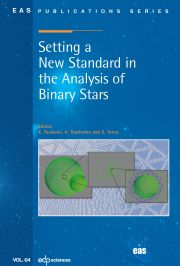Article contents
Introduction to the Restoration of Astrophysical Images byMultiscale Transforms and Bayesian Methods
Published online by Cambridge University Press: 13 March 2013
Abstract
The image restoration is today an important part of the astrophysical data analysis. Thedenoising and the deblurring can be efficiently performed using multiscale transforms. Themultiresolution analysis constitutes the fundamental pillar for these transforms. Thediscrete wavelet transform is introduced from the theory of the approximation bytranslated functions. The continuous wavelet transform carries out a generalization ofmultiscale representations from translated and dilated wavelets. The à trous algorithmfurnishes its discrete redundant transform. The image denoising is first consideredwithout any hypothesis on the signal distribution, on the basis of the a contrariodetection. Different softening functions are introduced. The introduction of aregularization constraint may improve the results. The application of Bayesian methodsleads to an automated adaptation of the softening function to the signal distribution. TheMAP principle leads to the basis pursuit, a sparse decomposition onredundant dictionaries. Nevertheless the posterior expectation minimizes, scale per scale,the quadratic error. The proposed deconvolution algorithm is based on a coupling of thewavelet denoising with an iterative inversion algorithm. The different methods areillustrated by numerical experiments on a simulated image similar to images of the deepsky. A white Gaussian stationary noise was added with three levels. In the conclusiondifferent important connected problems are tackled.
Information
- Type
- Research Article
- Information
- Copyright
- © EAS, EDP Sciences 2013
References
- 1
- Cited by

